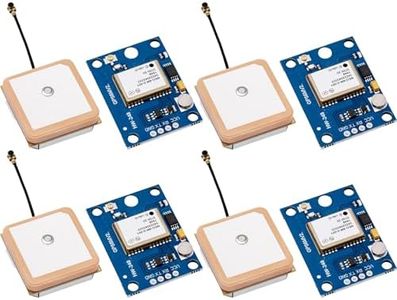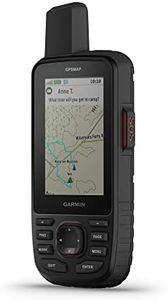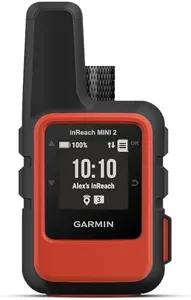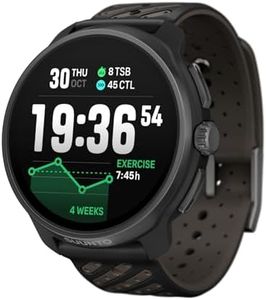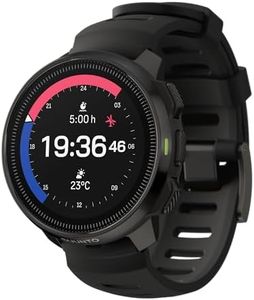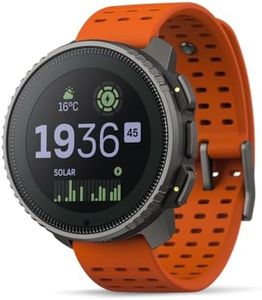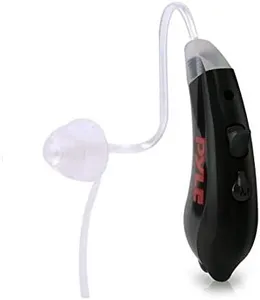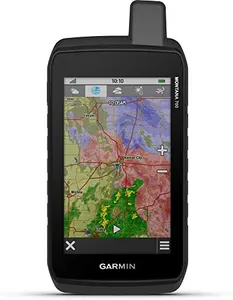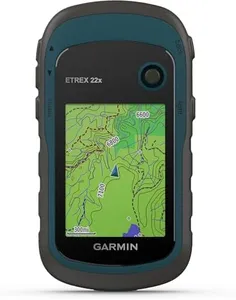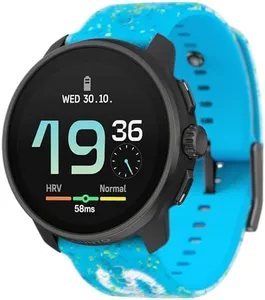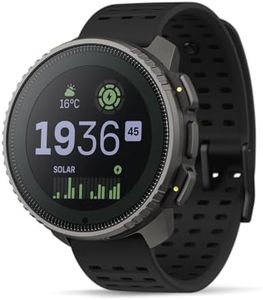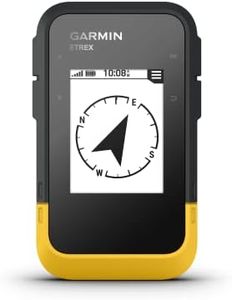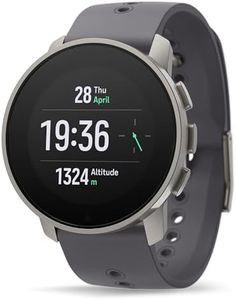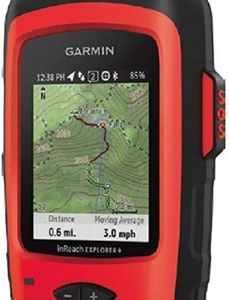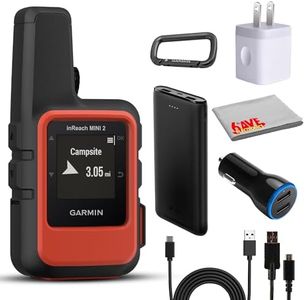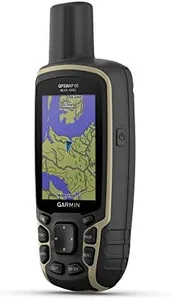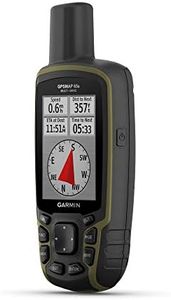10 Best Backpacking Gps 2025 in the United States
Our technology thoroughly searches through the online shopping world, reviewing hundreds of sites. We then process and analyze this information, updating in real-time to bring you the latest top-rated products. This way, you always get the best and most current options available.

Our Top Picks
Winner
Garmin GPSMAP 67i Rugged GPS Handheld with inReach® Satellite Technology, Two-Way Messaging, Interactive SOS, Mapping
Most important from
322 reviews
The Garmin GPSMAP 67i is a robust handheld GPS device designed for serious backpackers and outdoor enthusiasts. One of its standout features is its large 3-inch sunlight-readable color display, which ensures excellent visibility in various lighting conditions. The device supports two-way messaging and location tracking via the global Iridium satellite network, and it includes an interactive SOS feature, making it a reliable companion in emergencies—though these features require an active subscription and are subject to regional regulations.
The device is equipped with preloaded TopoActive mapping, multi-band GNSS support and sensors, enhancing its mapping and navigation capabilities significantly. Users can also access premium mapping content via Wi-Fi with an Outdoor Maps+ subscription, adding further value for detailed trip planning. The battery life is impressive, providing up to 165 hours in 10-minute tracking mode and up to 425 hours in expedition mode, ensuring long-lasting performance during extended trips. However, the device is relatively heavy at 8.1 ounces and larger in size, which might be a drawback for ultra-light backpackers.
The user interface, operated via buttons, is straightforward and functional, though it might feel dated to those accustomed to touchscreens. The Garmin GPSMAP 67i excels in providing robust navigation features, durability, and reliable emergency communication options, making it a solid choice for dedicated outdoor adventurers.
Most important from
322 reviews
Garmin inReach Mini 2, Lightweight and Compact Satellite Communicator, Hiking Handheld, Orange - 010-02602-00
Most important from
1869 reviews
The Garmin inReach Mini 2 is a compact and lightweight satellite communicator designed for backpackers and outdoor adventurers who need reliable two-way messaging and emergency SOS capabilities almost anywhere on the globe. It excels in portability, weighing just 3.5 ounces and fitting comfortably in your hand or pack without adding bulk. Its battery life is impressive, lasting up to 14 days with 10-minute tracking intervals, which is excellent for extended trips. The device offers solid durability with water resistance, so it can handle rough outdoor conditions.
The screen is small at 1.27 inches with a 176 x 176 resolution, which means it’s clear enough for basic navigation and messages but not ideal for detailed maps or complex visuals. Navigation is supported by features like TracBack routing to guide you back to your start point and an accurate digital compass that works even when you’re stationary. You can plan trips and sync waypoints via the Garmin Explore app, which adds flexibility and convenience. The user interface includes a touchscreen, making it easier to operate without fiddly buttons, and Bluetooth connectivity lets you pair it with smartphones and other Garmin devices to send messages or trigger SOS alerts.
An active satellite subscription is required for messaging and SOS functions, which is an extra ongoing cost. While it shares location and sends messages, it doesn’t provide full GPS mapping on the device itself, so it’s best used alongside a smartphone or other GPS-enabled device for detailed navigation. This lightweight, tough emergency communicator with basic navigation and excellent battery life is a strong choice, especially for solo hikers or those venturing into areas without cellphone coverage.
Most important from
1869 reviews
SUUNTO Race 2 GPS Sports Watch, 1.5" AMOLED Touchscreen w/Crown, 16 Days Battery Life, Training Metrics and Recovery Insights, Dual-GNSS, 32GB Global Offline Maps, Lightweight, Titanium Black
Most important from
37 reviews
The Suunto Race 2 is a lightweight, durable GPS sports watch designed for backpackers and endurance athletes who require reliable navigation and extended battery life. Its 1.5-inch AMOLED touchscreen offers clear visibility even in outdoor conditions, while the dual-band GPS ensures precise location tracking on complex trails. With 32GB of offline maps covering worldwide regions, users can navigate remote areas without depending on phone connectivity.
The watch boasts impressive battery performance, lasting up to 16 days in daily use and 55 hours with GPS active, making it suitable for multi-day trips. The titanium build enhances strength while maintaining a comfortable weight of around 10 ounces for extended wear. Its user interface is intuitive, featuring touch and crown controls along with over 115 sport modes to accommodate various activities beyond hiking. Bluetooth connectivity enables syncing with a phone for music control and data updates.
Some limitations include a touchscreen that may be less responsive when used with gloves and a feature-rich interface that could feel overwhelming for those who prefer simpler navigation tools. Additionally, it is bulkier compared to basic handheld GPS units, which might be a consideration for users prioritizing ultra-lightweight gear. The Suunto Race 2 combines advanced navigation capabilities, long battery life, and a rugged design, making it an excellent choice for active backpackers seeking a versatile GPS watch that supports both training and outdoor adventures.
Most important from
37 reviews
Buying Guide for the Best Backpacking Gps
Choosing the right backpacking GPS can make a significant difference in your outdoor adventures. A good GPS device will help you navigate unfamiliar terrain, track your progress, and ensure you stay on the right path. When selecting a backpacking GPS, it's important to consider several key specifications to find the best fit for your needs. Understanding these specs will help you make an informed decision and ensure you have a reliable companion on your journeys.FAQ
Most Popular Categories Right Now
